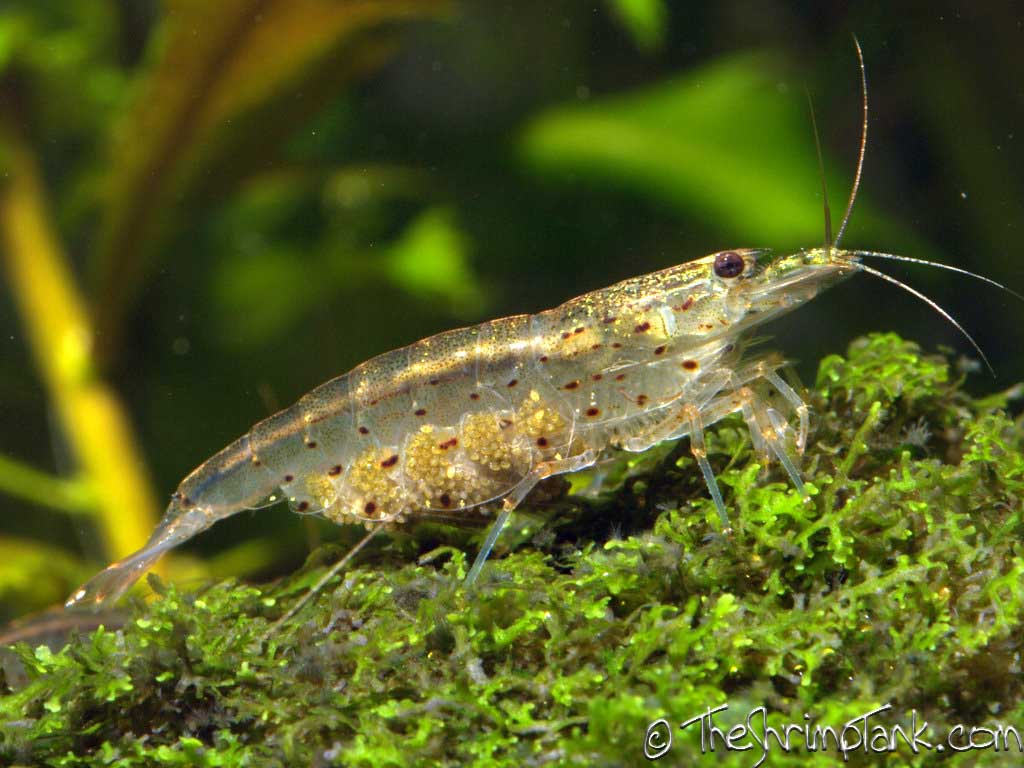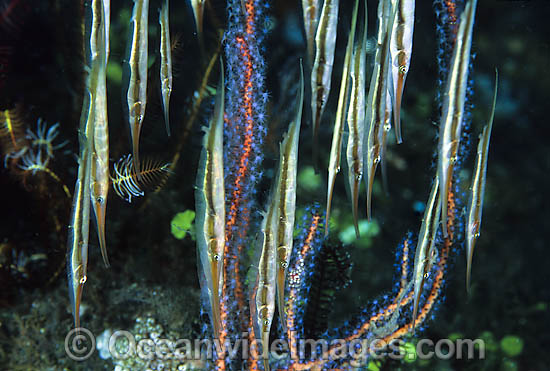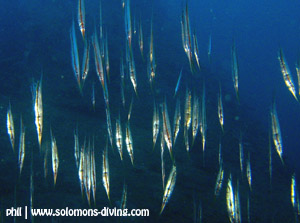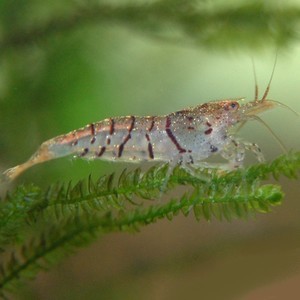
Aeoliscus strigatus
FAMILY
Centriscidae
TAXONOMY
Amphisile strigata Gьnther, 1861, Java, Indonesia.
OTHER COMMON NAMES
English: Razorfish.
PHYSICAL CHARACTERISTICS
A very unusual species, with an elongate, highly compressed
body. Snout long, almost filamentous, with a terminal mouth.
Dorsal fin terminal, situated far posterior, with a long, posteriorly
directed and hinged spine followed by two smaller spines
and nine to 10 rays. Caudal fin underneath dorsal fin. Anal fin
with 11–12 rays; pectoral fin with 11–12 rays. Body covered in
plates. Coloration yellowish dorsally and laterally above a dark,
horizontal stripe that runs through the eyes; white underneath
stripe and ventrally. Reaches 5.5 in (14 cm) in length.
DISTRIBUTION
Widespread in the tropical western Pacific Ocean and northern
Indian Ocean, reaching as far west as the Seychelles.
HABITAT
Usually found in shallow bays, coral reefs, and sea grass beds
down to a depth of about 66 ft (20 m).
BEHAVIOR
Commonly encountered in large schools, typically hovering
with its mouth pointed toward the bottom, maintaining a vertical
position. Sometimes found in association with long-spined
sea urchins of the genus Diadema.
FEEDING ECOLOGY AND DIET
Feeds on small invertebrates (e.g., polychaetes), including larvae
of mollusks and crustaceans.
REPRODUCTIVE BIOLOGY
Mostly unknown. Pelagic larvae have been described and begin
to resemble adults by about 0.7 in (17 mm) in length.
CONSERVATION STATUS
Not listed by the IUCN.
SIGNIFICANCE TO HUMANS
Not consumed but sometimes kept in aquaria.
Other popular Animals
Photo Gallery of - Common shrimpfish





 Animalia Life
Animalia Life